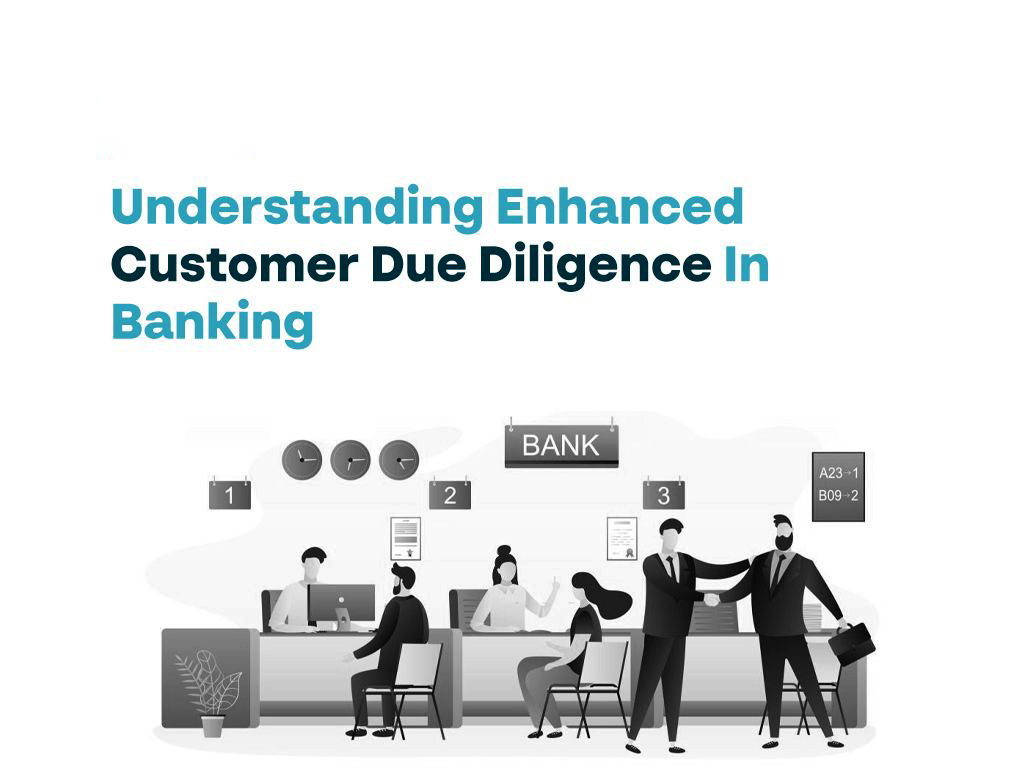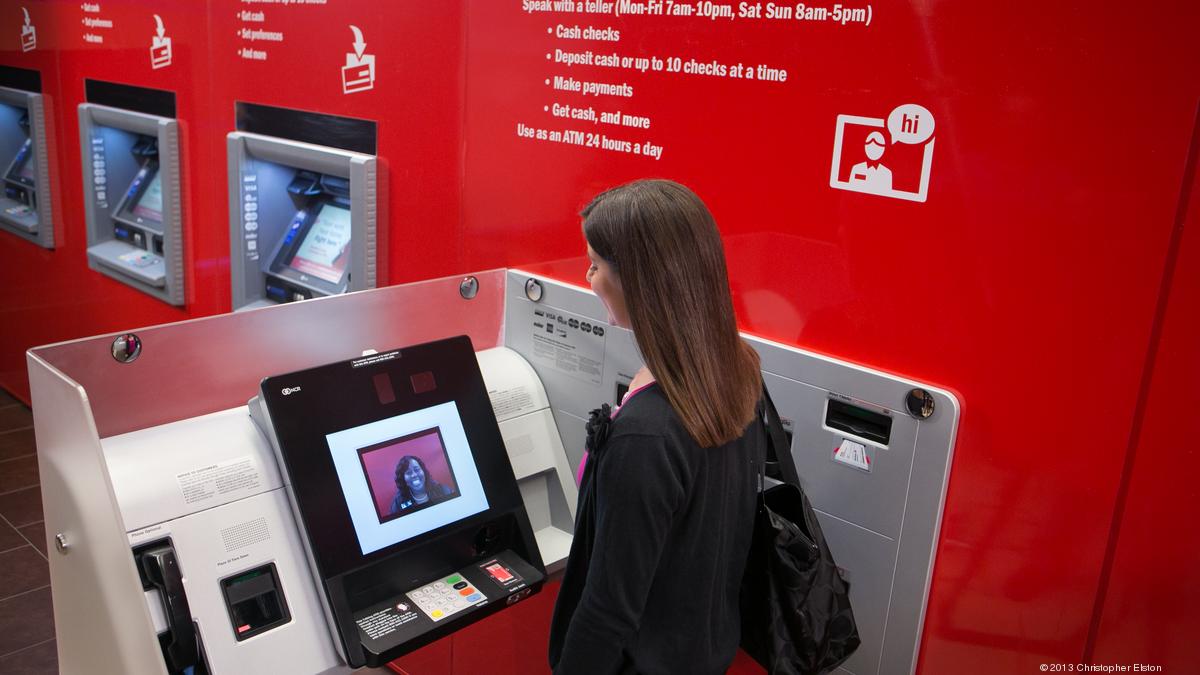

Finance
What Is CIF In Banking
Published: October 12, 2023
Learn what CIF means in the world of banking and finance. Understand its importance and how it impacts your financial transactions.
(Many of the links in this article redirect to a specific reviewed product. Your purchase of these products through affiliate links helps to generate commission for LiveWell, at no extra cost. Learn more)
Table of Contents
Introduction
In the world of banking, numerous acronyms and terms are used to refer to different aspects of the industry. One such term is CIF, which stands for Customer Information File. While it may sound like just another technical jargon, understanding what CIF means and its significance in banking is crucial for both customers and financial institutions alike.
CIF is an essential component of banking operations, as it serves as a comprehensive database that holds crucial information about bank customers. This information includes details like the customer’s identity, account relationships, transaction history, contact information, and more. By creating and maintaining a CIF, banks can streamline their operations, enhance customer service, and ensure regulatory compliance.
The importance of CIF in banking cannot be overstated, as it enables banks to have a holistic view of each customer’s financial relationship with the institution. This allows banks to offer personalized services, engage in targeted marketing, and mitigate potential risks associated with fraudulent activities or money laundering.
Throughout this article, we will delve deeper into the definition, purpose, types, and importance of CIF in banking. We will explore the differences between CIF and account numbers, as well as the process of acquiring a CIF. Additionally, we will discuss the various uses of CIF in banking operations, including how it contributes to the security of customer information.
By the end of this article, you will have a solid understanding of CIF in the banking industry, and how it plays a vital role in shaping the relationship between customers and their financial institutions.
Definition of CIF in Banking
In the realm of banking, CIF stands for Customer Information File. It is essentially a centralized database that contains comprehensive information about a bank’s customers. This information includes personal data, account details, transaction history, contact information, and any other relevant information that is necessary to establish and maintain a relationship with the customer.
A CIF is created for each customer when they open an account with the bank. It serves as a unique identifier that allows the bank to track and manage all interactions and transactions related to that customer. This ensures that all customer-related information is securely stored and easily accessible when needed.
The Customer Information File is typically managed by a bank’s back-end systems and is distinct from the customer’s actual account number. While the account number keeps track of the individual accounts and transactions, the CIF consolidates all relevant information about the customer, including multiple accounts they may hold with the same bank.
By having a CIF, banks can effectively manage the vast amount of customer data they handle on a daily basis. This centralized approach streamlines various banking processes, such as account opening, account maintenance, and customer service. It also facilitates regulatory compliance by providing a comprehensive audit trail of customer activities.
Overall, the CIF is an integral part of a bank’s infrastructure, enabling them to better understand their customers, provide personalized services, and maintain a secure and efficient banking environment.
Purpose of CIF
The Customer Information File (CIF) serves several important purposes in the banking industry. Let’s explore the key functions and benefits of CIF:
1. Centralized Customer Data: The primary purpose of CIF is to centralize and consolidate customer data in one place. This allows banks to have a unified view of each customer and their entire banking relationship. By having all relevant information readily accessible, banks can provide more personalized services and effectively manage customer accounts.
2. Streamlined Account Opening: CIF simplifies the process of opening new accounts for customers. Once a customer’s CIF is created, it can be used as a reference for future account openings. This eliminates the need for customers to provide repetitive information and expedites the account setup process.
3. Efficient Account Maintenance: CIF plays a crucial role in the ongoing maintenance of customer accounts. Any changes or updates to customer information, such as a change of address or contact details, can be easily reflected in the CIF. This ensures that accurate and up-to-date customer records are maintained.
4. Enhanced Customer Service: With a CIF, banks can offer personalized and targeted services to their customers. By understanding a customer’s banking history, preferences, and needs, banks can tailor their offerings and anticipate customer requirements. This improves customer satisfaction and loyalty.
5. Risk Management: CIF is instrumental in identifying and mitigating risks associated with fraudulent activities and money laundering. Through robust data analysis and monitoring, banks can detect suspicious transactions and flag them for further investigation. Having all customer data in one place allows for a comprehensive assessment of customer behavior and potential risks.
6. Regulatory Compliance: CIF helps banks comply with various regulatory requirements. It allows them to generate accurate reports and maintain an audit trail of customer activities. By having a centralized database, banks can easily retrieve customer information as needed for regulatory purposes.
7. Cross-Selling Opportunities: CIF enables banks to identify cross-selling opportunities based on a customer’s existing relationships and transaction history. By analyzing the customer’s financial needs and preferences, banks can offer tailored products and services, increasing revenue potential.
The purpose of CIF in banking is to streamline operations, ensure regulatory compliance, provide personalized services, and manage risks effectively. It plays a vital role in strengthening the relationship between banks and their customers, while also enhancing operational efficiency and security.
Types of CIFs in Banking
Customer Information Files (CIFs) in banking can be classified into different types, depending on the nature of the customer and their relationship with the bank. Let’s explore the most common types of CIFs:
1. Individual CIF: This type of CIF is associated with individual customers who have personal accounts with the bank. It includes all the relevant personal information of the customer, such as their name, address, contact details, identification documents, and financial history. Individual CIFs are used for tracking and managing the accounts and transactions of individual customers.
2. Joint CIF: A joint CIF is created when two or more individuals open a joint account with the bank. This type of CIF includes the personal information of all the account holders and establishes the joint ownership of the account. Joint CIFs allow for the effective management of joint accounts, including monitoring transactions, updating account information, and providing necessary services to all account holders.
3. Corporate CIF: Corporate CIFs are created for businesses, organizations, or entities that maintain accounts with the bank. These CIFs contain detailed information about the company, such as its legal name, registration details, authorized signatories, and financial information. Corporate CIFs enable the bank to manage the accounts and transactions of corporate customers, including providing specialized banking services and facilitating business operations.
4. Non-Resident CIF: Non-Resident CIFs are created for customers who reside in a different country or have non-residential status. These CIFs capture specific information related to non-resident customers, such as their foreign address, nationality, passport details, and any applicable tax-related information. Non-Resident CIFs allow banks to cater to the unique requirements and regulations associated with non-resident customers, facilitating seamless international transactions and services.
5. Nominee CIF: Nominee CIFs are established for customers who have nominated another individual to act on their behalf in relation to their bank accounts. The nominee is authorized to perform certain tasks, such as making withdrawals or signing documents, on behalf of the primary account holder. Nominee CIFs ensure that the nominated individual’s information is linked to the account, allowing them to perform authorized transactions.
It is worth noting that these are some of the common types of CIFs, and banks may have additional classifications based on their specific requirements and customer segments. By categorizing CIFs into different types, banks can effectively manage and differentiate customer profiles, ensuring that the appropriate services are provided to each customer segment.
Importance of CIF in Banking
The Customer Information File (CIF) plays a crucial role in the banking industry. Its importance cannot be overstated, as it serves several key purposes and offers numerous benefits to both banks and customers. Let’s explore the significance of CIF in banking:
1. Streamlined Operations: CIF enables banks to streamline their operations by centralizing customer data. With all the essential information stored in a single database, banks can easily access and manage customer information, leading to more efficient processes for account opening, servicing, and maintenance.
2. Personalized Services: CIF allows banks to understand their customers better. By analyzing customer data stored in the CIF, banks can gain insights into customer preferences, financial history, and behavior. This information enables banks to offer personalized products and services that align with individual customer needs, enhancing customer satisfaction and loyalty.
3. Risk Management: CIF is instrumental in managing risks associated with fraudulent activities and money laundering. Through the analysis of customer data in the CIF, banks can identify suspicious transactions, patterns, and behaviors, and take proactive measures to prevent financial losses and protect customers from potential threats.
4. Regulatory Compliance: CIF aids banks in meeting regulatory requirements. Banks are required to maintain accurate and up-to-date customer information for compliance with various regulations, such as anti-money laundering (AML) and know-your-customer (KYC) regulations. CIF helps banks generate accurate reports and maintain a comprehensive audit trail of customer activities, ensuring compliance with regulatory authorities.
5. Improved Customer Service: With CIF, banks can deliver enhanced customer service. Access to a comprehensive customer profile, account history, and preferences enables customer service representatives to provide more personalized and efficient support. This streamlines customer interactions, resolves issues promptly, and strengthens the overall customer experience.
6. Cross-Selling Opportunities: CIF facilitates cross-selling opportunities for banks. By analyzing the data stored in the CIF, banks can identify additional products or services that may be relevant to a customer’s financial needs. This allows banks to proactively offer tailored solutions, expanding their product portfolio and increasing customer engagement and revenue potential.
7. Enhanced Data Security: CIF contributes to the security of customer information. By storing data in a centralized system, banks can implement robust security measures to protect customer data from unauthorized access, ensuring privacy and maintaining the integrity of customer information.
In summary, CIF is of paramount importance in the banking industry. It enables banks to streamline operations, provide personalized services, mitigate risks, ensure regulatory compliance, enhance customer service, explore cross-selling opportunities, and maintain the security of customer data. By leveraging the power of CIF, banks can forge stronger relationships with their customers while delivering reliable and efficient financial services.
CIF vs Account Number
When it comes to banking, both Customer Information File (CIF) and account numbers play distinct but interconnected roles. Let’s explore the differences and similarities between CIF and account numbers:
1. Purpose: A CIF is a comprehensive database that holds customer information, including personal details, account relationships, transaction history, and more. Its purpose is to provide a holistic view of the customer’s relationship with the bank. On the other hand, an account number is a unique identifier assigned to a specific bank account. Its purpose is to facilitate transactions and track individual account activities.
2. Scope: CIF is broader in scope as it encompasses all the customer’s information related to their various accounts and interactions with the bank. It consolidates data from multiple accounts held by the same customer within the same bank. In contrast, an account number is specific to a particular account, whether it’s a checking account, savings account, or any other type of account the customer holds.
3. Management: CIF is typically managed by the bank’s back-end systems and is not visible or known to the customer. It serves as an internal tool for the bank to manage customer information effectively. In contrast, the account number is visible and known to the customer. It is used by the customer to access their account, make transactions, and perform various banking activities.
4. Usage: CIF is primarily used by the bank to provide personalized services, manage customer relationships, ensure compliance with regulations, and analyze customer behavior. It allows the bank to have a holistic understanding of the customer and their financial history. Conversely, the account number is used by the customer to perform specific actions such as depositing money, withdrawing funds, making transfers, and checking account balances.
5. Uniqueness: CIF is unique to each customer and remains consistent regardless of the accounts they hold within the same banking institution. It allows the bank to link and manage all information related to a specific customer. On the other hand, account numbers are unique to individual accounts. A customer may have multiple account numbers within the same bank, and each account number is distinct and independent.
6. Accessibility: CIF is typically not accessible or known to customers. It is primarily accessed and used by the bank’s internal systems and employees authorized to handle customer information. Account numbers, on the other hand, are accessible and known to the customer. They are required to access and manage their accounts through online banking, ATMs, or when providing account information for transactions.
In summary, CIF and account numbers serve different purposes in the banking industry. CIF is an internal database managed by the bank to consolidate and manage customer information. It offers a comprehensive view of the customer’s relationship with the bank. Account numbers, on the other hand, are unique identifiers assigned to specific accounts and are used by customers to access and perform transactions on their individual accounts. Both CIF and account numbers are essential components in facilitating banking operations and providing personalized services to customers.
How to Get a CIF in Banking
Acquiring a Customer Information File (CIF) in banking is a seamless process that is typically initiated when a customer opens an account with a bank. Here are the general steps involved in obtaining a CIF:
1. Choose a Bank: The first step is to select a bank where you would like to open an account. Research different financial institutions, compare their offerings, and choose the one that best fits your banking needs.
2. Visit the Bank: Once you have chosen a bank, visit the nearest branch or arrange an appointment with a bank representative to begin the account opening process. Most banks offer the option of opening an account online as well, so you may also have the choice to complete the process remotely.
3. Provide Required Documents: To open an account and obtain a CIF, you will typically need to provide certain documents. These may include proof of identification, proof of address, and any other documents mandated by the bank or regulatory requirements. Examples of accepted documents include a valid passport, driver’s license, utility bills, or bank statements.
4. Fill Out Application Forms: The bank will provide you with application forms to complete. These forms will require personal information such as your name, contact details, date of birth, and other relevant information required to establish your CIF. Fill out the forms accurately and ensure all information provided is up-to-date.
5. Submit the Application: Once you have completed the necessary forms and provided the required documents, submit the application to the bank. Depending on the bank’s processes, this can be done physically at a branch or electronically if opening an account online.
6. Account Opening and CIF Creation: Upon submission of the application, the bank will review your information and process your account opening request. If approved, the bank will create a unique CIF for you. The CIF will serve as the repository for all your customer-related information within the bank’s systems.
7. Receive Account Details: After the CIF creation, the bank will provide you with the account details, including your account number, which is different from the CIF. The account number is used for specific account-related activities such as deposits, withdrawals, and transfers.
8. Begin Banking Activities: Once you receive your account details, you can start using your account for various banking activities, such as depositing money, making transactions, accessing online banking services, and seeking assistance from customer service representatives.
It is important to note that the specific process and requirements for obtaining a CIF may vary slightly among different banks and jurisdictions. It is advisable to contact your chosen bank or visit their website to obtain accurate information about their account opening procedures and the documentation required.
By following these steps, you can successfully obtain a CIF in banking, enabling you to enjoy the full range of services and benefits offered by the financial institution.
Uses of CIF in Banking
The Customer Information File (CIF) in banking serves as a powerful tool that enables financial institutions to provide efficient and personalized services to their customers. Let’s explore the various uses of CIF:
1. Account Management: CIF is the central hub for managing customer accounts. It allows banks to maintain a comprehensive record of each customer’s account relationships, including details such as account types, balances, transaction history, and account ownership. This facilitates easy tracking and management of individual accounts.
2. Personalization and Customer Relationship Management: CIF plays a vital role in delivering personalized experiences to customers. By analyzing the information stored in the CIF, banks can gain insights into customer preferences, financial behavior, and needs. This enables them to customize product offerings, deliver targeted marketing campaigns, and provide tailored services that cater to individual customer requirements.
3. Risk Assessment and Fraud Prevention: CIF is an essential tool for assessing and managing risks associated with customer accounts. By analyzing transaction patterns, account activities, and historical data stored in the CIF, banks can identify potential fraud, money laundering, or other suspicious activities. This helps in minimizing risks, protecting customers, and safeguarding the reputation of the bank.
4. Regulatory Compliance: CIF plays a critical role in meeting regulatory requirements. Banks are obligated to comply with regulations such as anti-money laundering (AML), know-your-customer (KYC), and customer identification programs (CIP). CIF ensures that customer information is securely stored and readily accessible to meet compliance requirements and allow for seamless reporting as needed.
5. Customer Service and Support: CIF enables banks to deliver exceptional customer service. Having a comprehensive view of customer information allows customer service representatives to provide timely and accurate assistance to customers. They can access customer account details, transaction history, and preferences to resolve queries, address concerns, and provide guidance effectively.
6. Cross-Selling and Upselling: CIF provides banks with valuable insights into customer relationships and transaction behaviors. By analyzing the data stored in the CIF, banks can identify cross-selling opportunities and recommend relevant products and services to customers. This helps enhance customer satisfaction, increase revenue, and strengthen customer loyalty.
7. Streamlined Reporting and Analytics: CIF is a valuable source of customer data for reporting and analytics purposes. Banks can generate reports and analyze customer behavior trends, transaction patterns, and profitability based on the information stored in the CIF. This helps in strategic decision-making, product development, marketing strategies, and improving overall business performance.
8. Efficient Customer Onboarding: CIF simplifies customer onboarding processes. Once a customer’s CIF is established, future account openings become easier and faster. The bank can pre-fill application forms with information from the CIF, reducing the need for customers to provide repetitive details and streamlining the account opening process.
In summary, CIF serves a multitude of functions in the banking industry. It helps banks manage customer accounts, deliver personalized services, ensure compliance with regulations, identify and mitigate risks, enhance customer relationships, drive revenue growth, and support strategic decision-making. The effective utilization of CIF contributes to a seamless and customer-centric banking experience.
Security of CIF Information
The security of Customer Information File (CIF) information is of paramount importance for banks to maintain customer trust and protect sensitive data. Safeguarding CIF information involves implementing robust security measures and industry best practices. Here are some key aspects of CIF information security:
1. Data Encryption: Banks use advanced encryption techniques to protect CIF data. Encryption converts data into an unreadable format, ensuring that even if unauthorized access occurs, the information remains secure. This includes encrypting data in transit between systems and at rest in databases or storage devices.
2. Access Controls: Banks enforce strict access controls to limit access to CIF information to authorized personnel only. This involves implementing role-based access controls (RBAC) where employees are granted access privileges based on their job roles and responsibilities. Strong authentication mechanisms, such as two-factor authentication, can also be employed to ensure only authorized individuals can access CIF data.
3. Secure Storage: CIF information is stored in highly secure environments. Banks utilize secure data centers with physical and logical controls in place, including firewalls, intrusion detection systems, and constant monitoring to protect against unauthorized access. Regular audits and vulnerability assessments are conducted to ensure the integrity of the storage infrastructure.
4. Regular Data Backups: Banks perform regular backups of CIF data to prevent data loss in case of a system failure, natural disaster, or other unforeseen incidents. Backup strategies include offsite storage and redundancy to ensure data availability and recovery measures in case of an emergency.
5. Secure Transmission: When transmitting CIF data, banks employ secure communication protocols, such as Transport Layer Security (TLS) or Secure Sockets Layer (SSL), to encrypt data during transport between systems. This protects the information from interception and ensures data integrity.
6. Employee Training: Banks provide comprehensive training to employees handling CIF information to create awareness about data security best practices, confidentiality, and the importance of safeguarding customer data. Regular training sessions and updates help ensure that employees are equipped with the knowledge to prevent data breaches and respond effectively in security incidents.
7. Compliance with Regulations: Banks adhere to regulatory requirements governing the protection of customer data. This includes complying with data privacy laws, such as the General Data Protection Regulation (GDPR), and industry-specific regulations for data security, such as Payment Card Industry Data Security Standard (PCI DSS).
8. Incident Response and Monitoring: Banks have robust incident response plans in place to swiftly act in case of any security incidents or data breaches. Continuous monitoring of systems and networks allows banks to detect and respond promptly to any suspicious activities, ensuring the security of CIF information.
In summary, banks prioritize the security of CIF information to protect customer data, maintain trust, and comply with regulatory requirements. By utilizing encryption, access controls, secure storage, data backups, secure transmission, employee training, compliance measures, and incident response procedures, banks can effectively safeguard CIF information from unauthorized access or breaches.
Conclusion
The Customer Information File (CIF) plays a vital role in the banking industry, serving as a centralized database that holds comprehensive customer information. Throughout this article, we have explored the definition, purpose, types, and importance of CIF in banking.
CIF serves as the backbone of efficient banking operations, allowing banks to streamline processes, deliver personalized services, mitigate risks, and ensure regulatory compliance. By consolidating customer data in one place, banks gain valuable insights into customer behavior, preferences, and financial needs, enabling them to offer tailored solutions and enhance the overall customer experience.
The differences between CIF and account numbers have also been highlighted, with CIF providing a holistic view of the customer and their relationship with the bank, while account numbers serve as unique identifiers for specific accounts.
Acquiring a CIF is a straightforward process that occurs when opening an account with a bank. The required documentation is submitted, and upon approval, a CIF is created, enabling customers to access a range of banking services.
We have also discussed the significant uses of CIF in banking, including account management, personalization, risk assessment, regulatory compliance, customer service, cross-selling opportunities, reporting, and analytics.
Finally, the security of CIF information is of utmost importance. Banks employ robust security measures, such as data encryption, access controls, secure storage, regular data backups, secure transmission, employee training, compliance with regulations, and incident response procedures to protect CIF information from unauthorized access or breaches.
In conclusion, CIF is a critical component of the banking ecosystem, empowering banks to deliver efficient, personalized, and secure services to their customers. The effective utilization of CIF strengthens customer relationships, drives business growth, and fosters trust in the banking industry.














